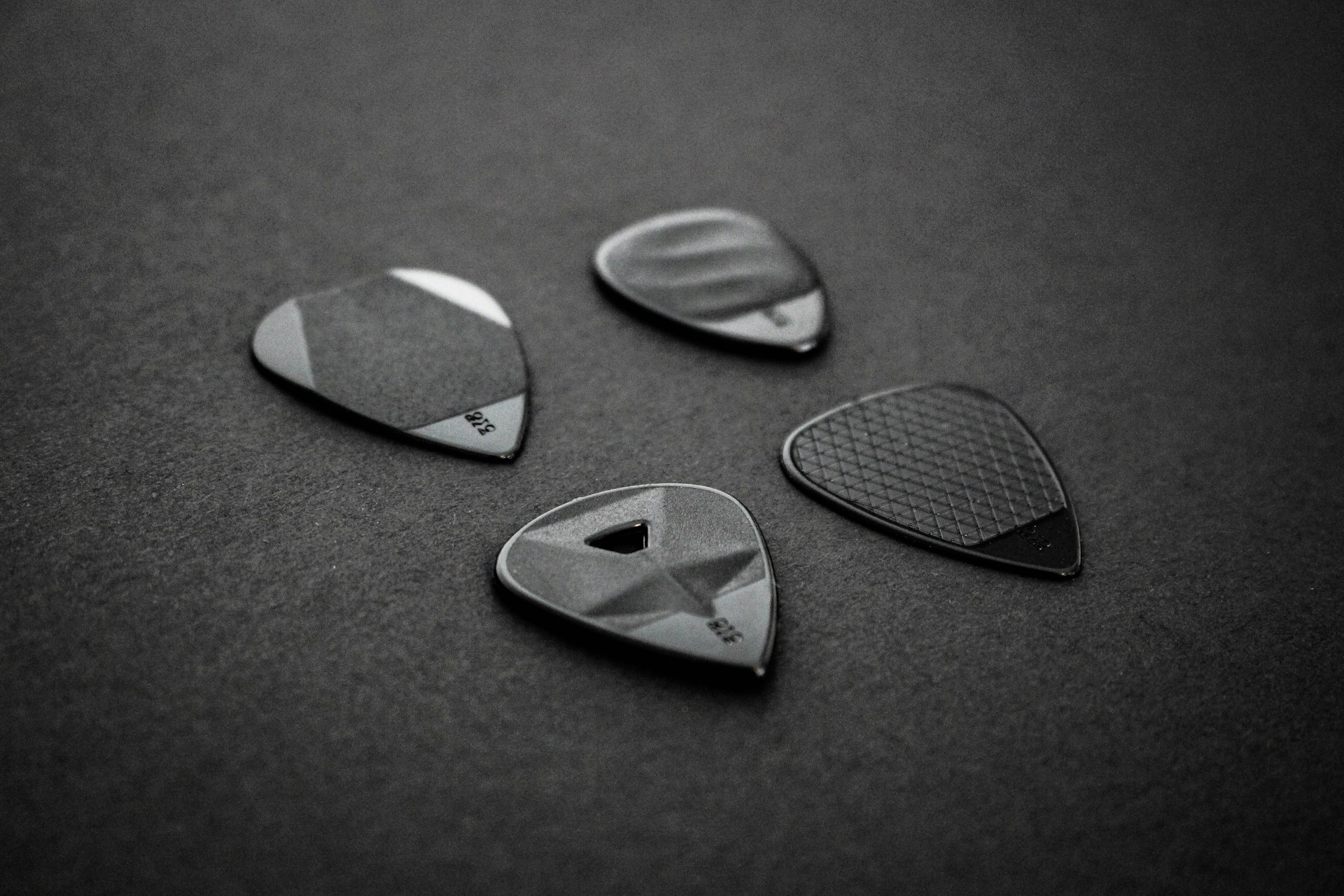
Selecting a pick, or plectrum, is crucial for any guitarist aiming to master their instrument and extract the best possible sound. This small, often underestimated accessory plays a decisive role in the quality of the produced music. This article will guide you through the essential criteria to consider when choosing the pick that suits your playing style and needs.
Why Choose a Pick?
The pick offers several undeniable advantages for the guitarist. It allows for a sharper attack and a more precise sound, contributing to better musical articulation. Depending on the chosen material, it can also add a unique color to your sound, which is particularly appreciated in styles such as Hard Rock, Metal, Folk, or Gypsy Jazz. Moreover, using a pick is often more suitable for playing on electric and acoustic guitars, offering resistance and responsiveness that can be adjusted depending on the pick’s thickness.
Selection Criteria for a Pick
I. Thickness
The thickness of the pick is a determining factor that directly influences your playing style:
- Extra-thin (< 0.45mm): Ideal for beginners, it produces a smoother sound.
- Thin (> 0.45mm to 0.70mm): Suitable for guitarists looking to vary the intensity of their playing.
- Medium (> 0.70mm to 0.85mm): Offers a perfect balance between comfort, precision, and playing speed.
- Heavy (> 0.85mm to 1.50mm) and Extra heavy (> 1.50mm): Preferred by experienced guitarists, especially in genres like Metal and Jazz, for their precision in solos.
II. Material
The material of the pick significantly affects the produced sound. Picks made of plastic or polymers (celluloid, nylon, acrylic) are common, economical, but wear out quickly. Nobler materials like stone, wood, bone, or horn, although more expensive, offer superior sound quality and increased expressiveness. For example, the ergonomic Dugain Standug pick made of bone is renowned for amplifying harmonics and enriching the sound.
III. Shape and Size
The shape of the pick influences the attack and precision. While size is more about personal comfort, it can also impact your playing style. Beginners are encouraged to experiment with different shapes and sizes to find the pick that suits them best.
Practical Tips
- Test different picks: Every guitarist has unique preferences. Feel free to try various thicknesses, materials, shapes, and sizes.
- Adapt your choice to your style of music: Some picks are better suited to certain musical genres. Experiment to find the one that enhances your sound the most.
- Don’t neglect comfort: A comfortable pick will prolong your playing sessions and reduce fatigue.
In conclusion, choosing a pick is an important step in the quest for the perfect sound for any guitarist. By considering thickness, material, shape, and size, you can find the pick that not only improves your technique but also enriches your musical expression. Remember, the ideal pick is the one that meets your specific needs and allows you to play at your best.